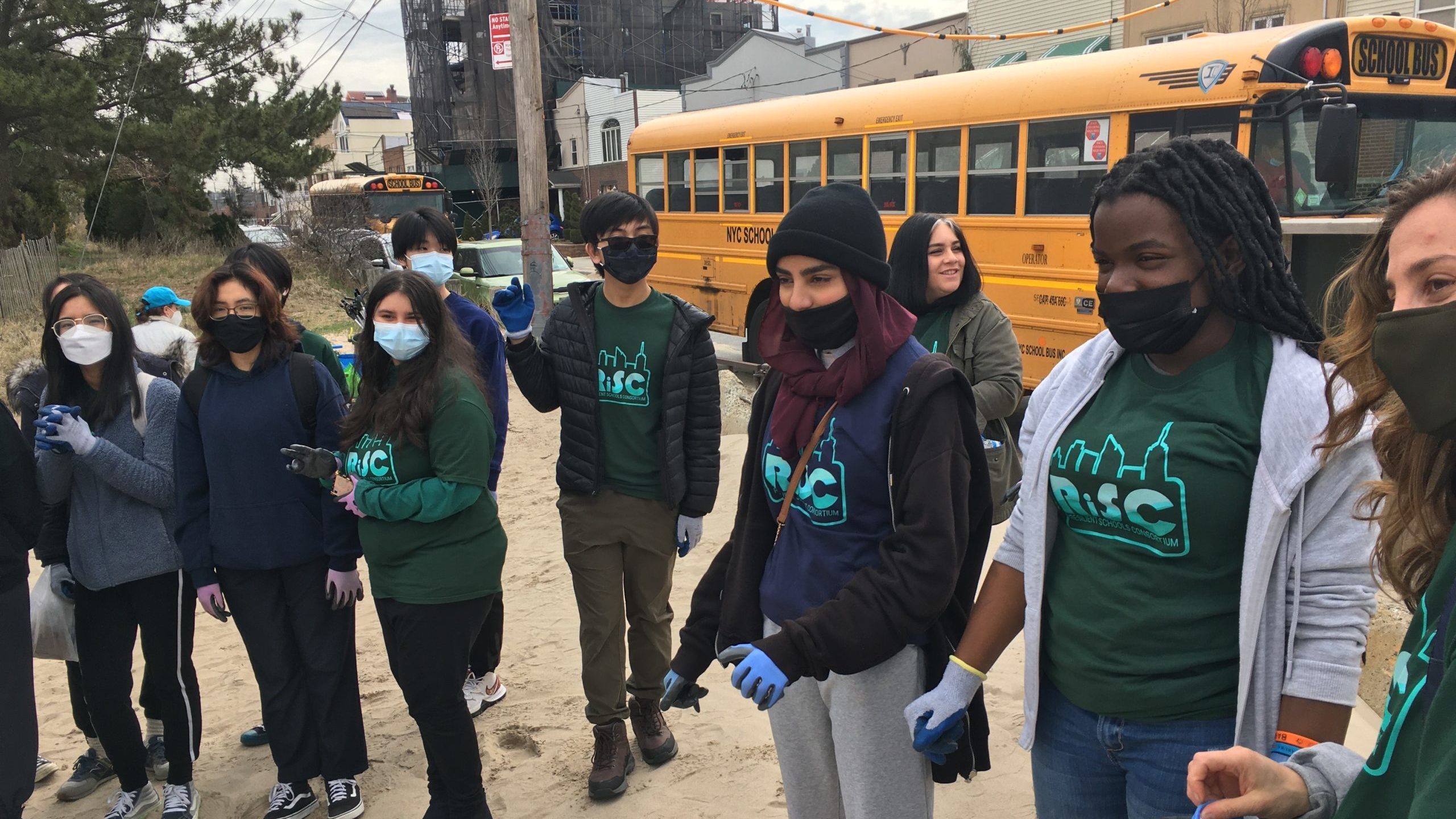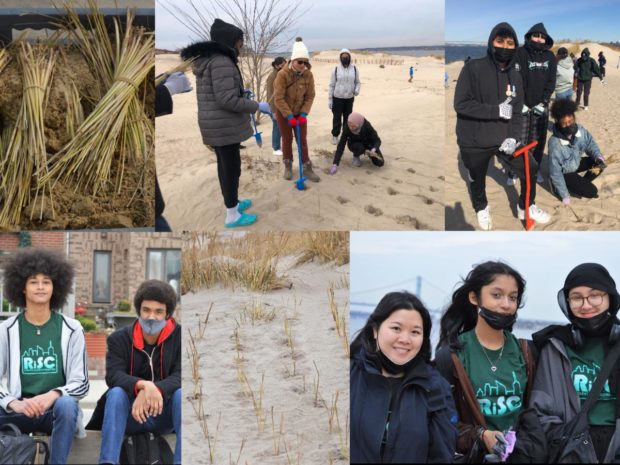We have much more to do and your continued support is needed now more than ever.
RiSC Students Help Create Living Shorelines in Coney Island Creek Park

Over the past decade, the need to protect our nation’s coastlines has become one of the most critical and immediate challenges we face. Due to increasingly frequent and intense coastal storms, flooding, sea level rise, and erosion, our coastal habitats are literally disappearing, impacting people and wildlife at an alarming rate. With its 520 miles of coastline, New York City is vulnerable. Living shorelines can help.
The National Wildlife Federation’s Resilient Schools Consortium (RiSC) program is working with partners to engage NYC middle and high school students in using nature to help create more climate resilient communities.

Stabilizing coastlines
American beachgrass, (Ammophila breviligulata), is a critical tool for this work because it generates underground rhizomes that can grow downwards up to 13 feet and extend outward 6-10 feet, colonizing and stabilizing dune environments. The rhizomes can also produce as many as 100 stems per clump annually.
On March 22nd, 23rd, and April 5th with our partners at NYC Parks and American Littoral Society, students from nine partner schools planted a total of 10,000 beachgrass culms at Coney Island Creek Park, along Bayview Avenue, to protect surrounding homes and property from storm surge and flooding. The native beachgrass culms, dibble bars, and shovels were provided by NYC Parks’ Stewardship team.
As part of the RiSC program, students will also conduct oral history interviews with local residents, to learn about their lived experiences with climate impacts, and will distribute a Coastal Community Vulnerability Assessment to gather data on the public’s awareness about current and future climate impacts, preparedness, and access to services.
National Wildlife Federation affiliate New Jersey Audubon is adapting the RiSC program in Wildwood, New Jersey, an area that has experienced severe coastal flooding. RiSC has also been adapted in Texas and the U.S. Virgin Islands.
Acknowledgment of Support and Disclaimer: This blog post was prepared by the National Wildlife Federation under award NA20SEC0080005 from the Environmental Literacy Program of the National Oceanic and Atmospheric Administration (NOAA), U.S. Department of Commerce. The statements, findings, conclusions, and recommendations are those of the author(s) and do not necessarily reflect the views of NOAA or the U.S. Department of Commerce.






















